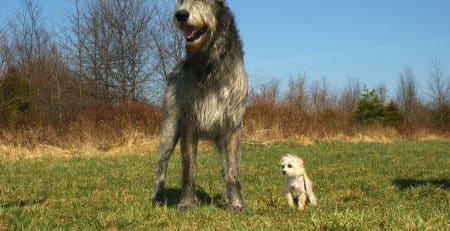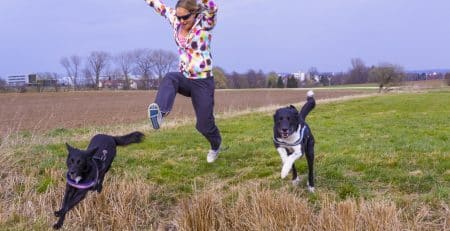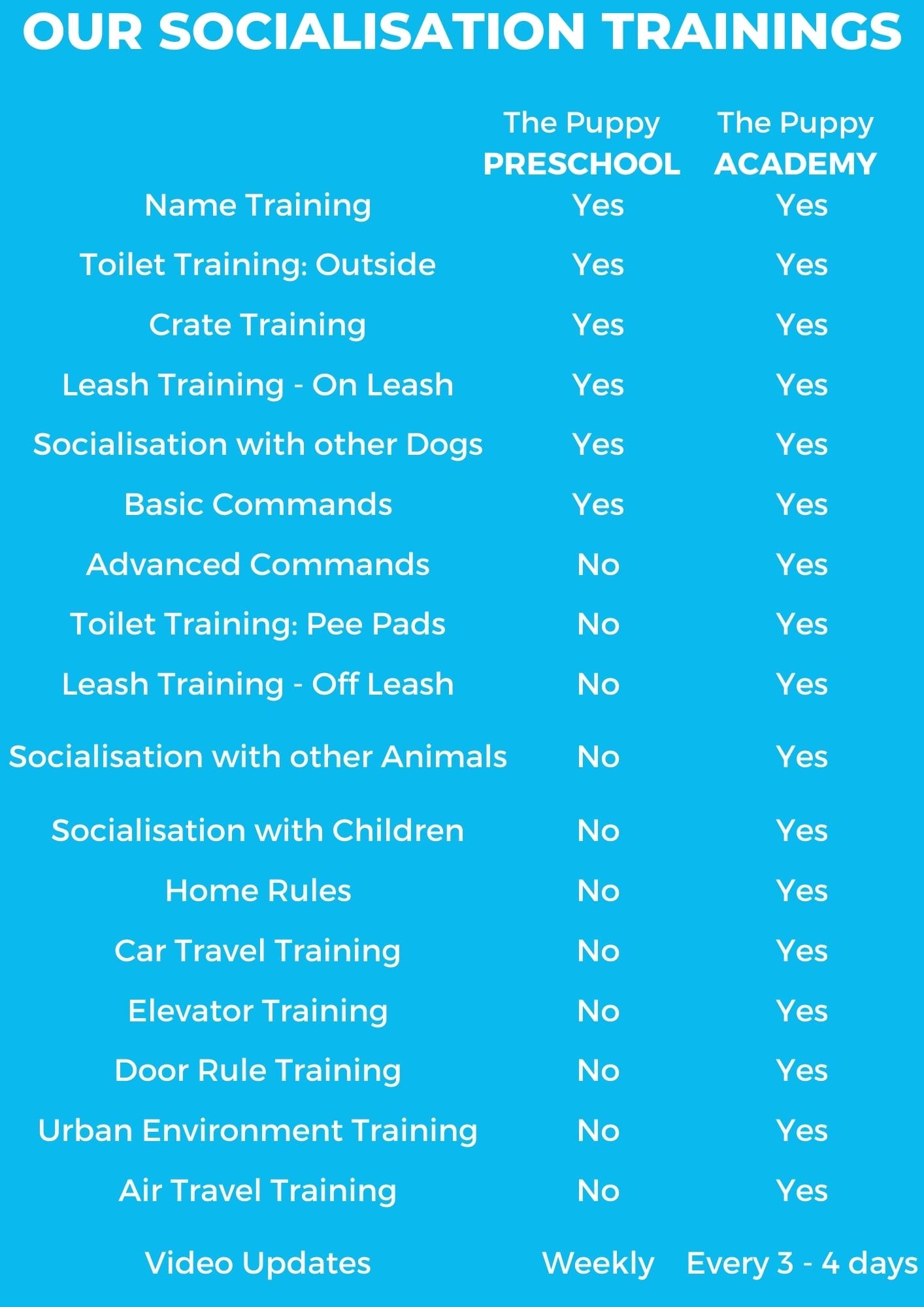Service dogs
A service dog is a dog that has been trained to assist a person with a disability. Many people with disabilities can benefit from having a service dog. Service dogs can help the blind, the deaf, people with motor difficulties, and even those with epilepsy or diabetes. They are trained to perform a series of tasks, which range from pulling wheel chairs, to alerting people with epilepsy that a seizure is about to happen, or acting as a guide dog.
Service dogs and emotional support animals are different, though they both do very important work. An emotional support animal provides comfort to their human. This is beneficial for people with autism, anxiety, and other emotional or mental conditions. Therapy dogs play a similar role, visiting people in schools, hospitals, and old people’s homes to provide comfort. The main difference between an emotional support dog and a therapy dog is that the former is for one particular person, and the latter will visit a wide variety of people, many of whom are strangers.
What do they do?
A service dog is there to help a person with a disability. It takes a lot of time and money to train a service dog.
There are many charities devoted to training and providing service dogs. Training starts when the dog is a puppy. Puppies with the right temperament for the job are looked after by puppy raisers, who care for the puppy for its first year of life. A puppy raiser will socialise the puppy and do some basic training, then will return the puppy for formal training.
Formal training will teach the dog how to perform all the tasks they’ll need to assist a person with disabilities. Guide will learn wear a special harness to help guide a visually impaired person navigate the world. Hearing dogs learn to help alert deaf or hard-of-hearing people to important sounds. Service dogs provide a wide variety of functions, including working with wheelchair users, people with epilepsy, or people with psychiatric conditions.
Which dogs can be service dogs?
Though in theory any dog with the right character can become a service dog, typical dog breeds that excel at this are Labradors and Golden Retrievers. These breeds are highly trainable and good tempered, and their large size can be very useful if they need to help their human with physical tasks, such as pulling a wheelchair. If strength isn’t an issue, then a dog of any size can be a service dog; for example, hearing dogs don’t need to be big or strong to do their job.
A service dog must undergo training. They are working animals, and need to learn very specific tasks to do their job effectively. It can be extremely expensive (Service Dogs Malta estimates that each dog costs 15,000 to maintain and train) and time-consuming to train a service dog; and not all the dogs make the grade. You might not be able to take your beloved pet dog and successfully train them to work as a service dog, and in fact you may be better off contacting a charity that can pair you with a qualified dog.
Trying to pass off an untrained pet dog as a service animal does an incredible disservice to real service dogs and people with disabilities. If you try to pass off your dog as a service dog and they behave poorly, it reflects badly on other service dogs and the people they help.
Service dogs: dos and don’ts
DO:
- Talk to the owner and not to the dog: Be sure to speak to the owner before you speak to the dog. It’s rude to ignore the owner, and they may not want you to speak to or pet their dog
- Ask permission to pet the dog: Service dog owners give their dogs breaks throughout the day. They will give the dog a specific release command so that the dog knows that it’s break time. Most owners will happily let you pet or fuss over the dog when its resting.
- Keep your dog on a lead: Don’t let your dog run up to a service dog. Your dog may be perfectly friendly and just want to play, but they can easily distract the service dog from its job. There have also been incidents where unfriendly dogs seriously injured service dogs in fights. Don’t take the risk; keep your dog on a lead, and only approach if the owner says it’s okay.
- Be polite and respectful: Don’t ask personal questions about the owner’s disability; it’s private and not your business.
- Remember that service dogs are protected by law: In most countries, there is legislation protecting service dogs and their owners. The law often extends rights to them, such as allowing service dogs access to places where dogs normally aren’t allowed, such as restaurants and hospitals.
DON’T:
- Pet the dog without permission: Remember that service dogs are working dogs. If you speak to or pet them, you are distracting them from their jobs. There is also a chance that you are endangering their owner! A distracted service dog might not detect an oncoming seizure, which could lead to serious injuries for their owner.
- Offer food to the dog: This is very distracting for the dog. You also don’t know whether the dog has any allergies or dietary problems, and you could make the dog ill by feeding it the wrong food.
- Get offended: If the owner tells you not to touch their dog, don’t be offended. Remember that a service dog is a working dog, and that owners are completely or partially reliant on these dogs for their day to day lives. Distracting a service dog will at best inconvenience the owner, but at worst can have deadly consequences.
- Assume that a service dog is over-worked or unloved: Service dog owners love their dogs just as much (or more!) as they rely on them. Service dogs are given frequent breaks throughout the day, and will be retired once they are too old (some owners keep their old service dogs as beloved pets). Many service dogs are provided by charities that make sure that the dogs are looked after properly. You don’t need to feel sorry for service dogs: they get plenty of rest and relaxation when they aren’t on the job!






















